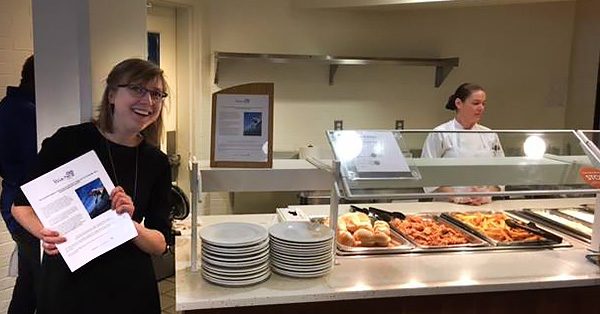Wide Net Project Goes After Blue Catfish, with Help from Bon Appétit Chefs
Nine times out of ten, I am that person who ruins your favorite food.
“Did you know your shrimp cocktail may have relied on slave labor? Or that your extra-cheesy pizza is contributing to climate change? You thought you were helping a chicken by buying farm fresh or cage-free? Think again.”
In a food system that often puts profits first and people last, there are a lot of unsettling practices to bring to light. Very rarely does one hear, “You can help the planet by eating as much of this delicious food as possible!”
But this is exactly the message the Wide Net Project wants to spread about Chesapeake blue catfish. Founded in 2013 to simultaneously fight invasive species and hunger through its messaging and distribution connections, the Wide Net Project is a nonprofit offshoot of the Food Works Group, a food issues consulting group that has led and supported initiatives like Food Day. .
How do they do this? By strategically overfishing blue catfish. “Blue cat,” as it’s called, is an invasive species overtaking the Chesapeake Bay and its tributaries. This non-native fish has a voracious appetite and no natural predators in the watershed. It reproduces quickly and eats everything in its wake, including iconic Chesapeake species such as blue crab and rockfish. Thus, blue catfish not only threatens the 2,700 plants and animals that are native to the Chesapeake, but also the fishing economy that relies on blue crabs and other regional favorites.
I first heard about the Wide Net Project from chef Patterson Watkins, who was then Bon Appétit’s forager at the University of Pennsylvania. She was presenting at a conference on local sourcing success stories through her partnership with Bon Appétit’s Farm to Fork supplier the Common Market, a regional food hub (see my previous blog post). A Chesapeake native, she gave an impassioned case for defending the Bay, and she couldn’t believe I hadn’t heard this great story about how chefs could help the Bay by serving more blue catfish.
Watermen noticed they were pulling up more blue cat year-round, but there was no local market for the species. So, the Wide Net Project partnered with local fishermen to market blue catfish and connect with large institutional buyers such as hospitals, restaurants, and colleges. For better or worse, the blue cat’s ravenous diet makes it taste different than your average catfish. These are not the bland bottom-feeders you may be used to — this firm white fish has a remarkable taste. The story sells itself — a tasty way to save the Bay.
And even better, the Monterey Bay Aquarium’s Seafood Watch program agrees, rating the Chesapeake Bay’s blue catfish a Best Choice “because fishery managers are working to stop this invasive species from spreading. Also, there are no serious concerns about bycatch of other species or habitat impacts.”
I’m pleased to report that Bon Appétit teams at the University of Pennsylvania, St. Mary’s College of Maryland, and a corporate campus in the D.C. area have been featuring blue catfish on their menus in support of local fishermen, local communities, and the Chesapeake Bay.
To get even more catfish onto people’s plates, the Wide Net Project also works with local soup kitchens and hunger relief organizations to donate the fish. The idea is for every pound purchased, one person can be fed a healthy serving of this lean protein. WNP currently donates to organizations like Miriam’s Kitchen, N Street Village, and D.C. Central Kitchen.
Not long ago, I visited St. Mary’s College of Maryland — located right on the shores of the Chesapeake in Southern Maryland — and the Bon Appétit team served up some delicious blue catfish sliders with Cajun home fries and house-made remoulade. I was excited to encourage students to come back for seconds, for once!
